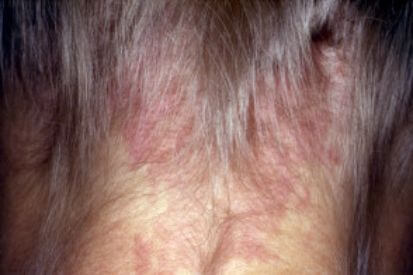Birthmarks
Our experienced dermatologists at The Dermatology & Skin Surgery Center at Creedmor offer comprehensive evaluations and personalized treatment plans for individuals with birthmarks. Whether you seek to reduce the appearance of a birthmark for cosmetic reasons or require medical intervention for a potentially problematic birthmark, our team is dedicated to providing you with the highest quality care.
Examples of Birthmarks







What are the Symptoms of a Birthmark?
- Can be flat or raised, exhibiting regular or irregular borders, and varying shades.
- Typically emerge at or shortly after birth.
- Some may have a reddish-purple appearance.
- Others may appera as light brown patches on the skin.
Causes of Birthmarks
- Birthmarks result from variations in the development of skin cells or blood vessels during fetal growth.
- Vascular birthmarks are caused by irregular blood vessel formation.
- Pigmented Birthmarks result from an overgrowth of pigment cells.
- The precise cause of these variations is not always clear, but genetic factors likely play a role.
Birthmark Prevention
Birthmarks may manifest hours, days, or even weeks after birth. They can occur in both male and female infants of any ethnicity. There are no established preventive measures for birthmarks; they are genetic, and certain individuals are predisposed to them.
Birthmark FAQs
Some birthmarks may evolve or change in appearance over time, especially during childhood. This is particularly true for vascular birthmarks, such as hemangiomas, which can grow rapidly during the first year of life and then gradually fade. Pigmented birthmarks, such as moles, may also change in color or size over the years. While most changes are benign, any sudden or significant changes in a birthmark should be evaluated by a dermatologist.
The development of birthmarks can have a genetic component. Certain types of birthmarks, such as café-au-lait spots or certain nevi (moles), may have a hereditary link. However, the presence of a birthmark doesn't always mean that other family members will have the same birthmark, and new birthmarks can also occur spontaneously.
In many cases, birthmarks are harmless and do not require removal. However, if a birthmark causes cosmetic concerns, discomfort, or poses a risk of complications, removal may be considered.
Consider a total body skin exam by a dermatologist if you have numerous birthmarks, concerns about changes in their appearance, or a personal or family history of skin cancer. This examination is especially important for monitoring atypical or evolving birthmarks, aiding in early detection of potential skin issues like melanoma. While self-examination is helpful, a professional skin exam offers a more thorough assessment and expert insight, providing peace of mind and ensuring any concerning marks are properly evaluated and managed. If you're uncertain or worried about specific birthmarks, scheduling an appointment with our dermatologists for a comprehensive skin check can be a proactive step toward maintaining good skin health.
Yes, using sunscreen is advisable for birthmarks, especially those that are more sensitive to sunlight or have pigmentation changes. Birthmarks vary in appearance and composition, and while some may not be affected by sunlight, others can become more noticeable, darker, or more prone to damage from UV radiation.
Sunscreen helps protect the skin from the harmful effects of the sun's ultraviolet (UV) rays, which can cause skin damage, premature aging, and an increased risk of skin cancer. Applying sunscreen with a high SPF (Sun Protection Factor) to areas with birthmarks can help minimize the potential effects of sun exposure.
Yes, there are several types of birthmarks, including vascular birthmarks (such as hemangiomas and port-wine stains) and pigmented birthmarks (such as moles and café-au-lait spots). Each type has its own characteristics and may require different treatment approaches.
From our QualDerm Family of Brands: Total Body Skin Exams
Birthmark Treatments
Dermatologic treatments for birthmarks vary depending on the type and characteristics of the birthmark. Common approaches include laser therapy, which can target and lighten certain types of birthmarks like port-wine stains or hemangiomas by breaking down the blood vessels that cause discoloration. Surgical excision might be considered for smaller, raised birthmarks or those that pose health risks.
Schedule with one of our skin experts today to determine the best custom approach for your birthmark concerns.
Featured Products

Colorescience Sunforgettable Total Protection Body Shield Bronze SPF 50
Enjoy a perfect, natural sun-kissed glow all year long without the damage! This powerful protector features a beautiful bronze tint with our exclusive EnviroScreen® Technology to provide all-mineral protection from environmental aggressors such as UVA/UVB, pollution, blue light, and infrared radiation. Patented ingredients and a hydrating, antioxidant-rich mineral formula nourish and protect skin against free radicals that contribute to skin damage. Total protection in an elegant texture that blends easily with a weightless finish. Net Wt. 4 fl. oz. / 120 mL

iS Clinical Super Serum Advance+
Pro-Heal Serum Advance+ features our scientifically advanced L-Ascorbic Acid (Vitamin C), combined with a superior form of Olive Leaf Extract and pure Vitamins E and A. This powerful formulation significantly increases antioxidant protection while helping improve the appearance of compromised, blemish-prone, and aging skin. 30 mL e 1 fl. oz.
